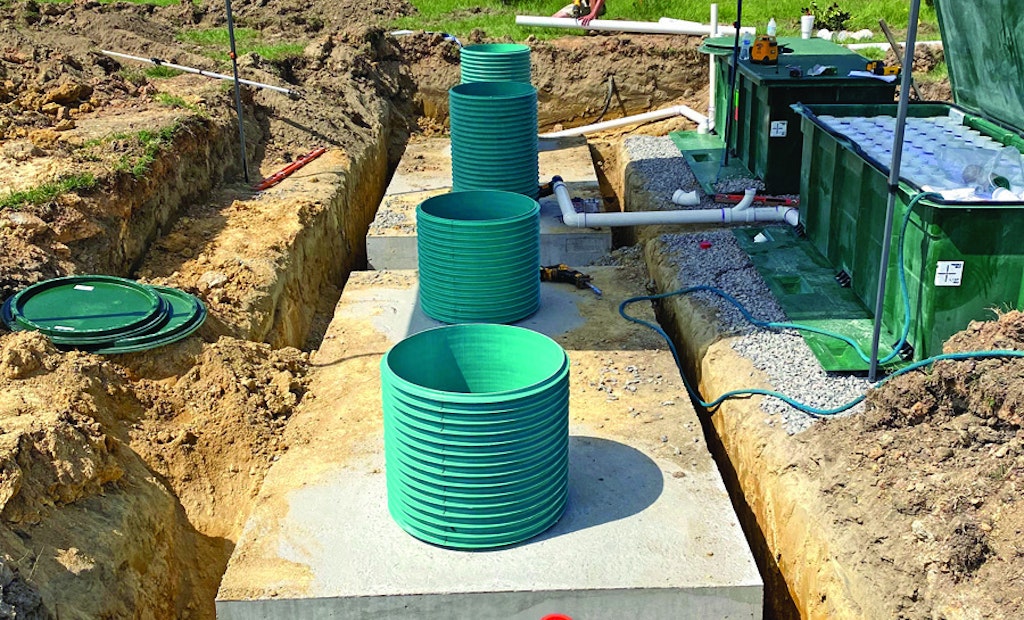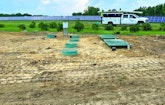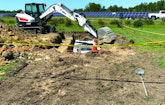
A pair of dual-compartment tanks from Shoaf Precast with Orenco Biotube effluent filters and lids and risers before being backfilled. A worker in the background cuts pipe with a DEWALT reciprocating saw. (Photos courtesy of Full Circle Environmental)
In 2008, the nonprofit Turning Point Community Development Corporation opened on the property of a former car dealership in Henderson, North Carolina, to provide a much-needed community center offering preschool and educational programs for children.
However, an application to...











